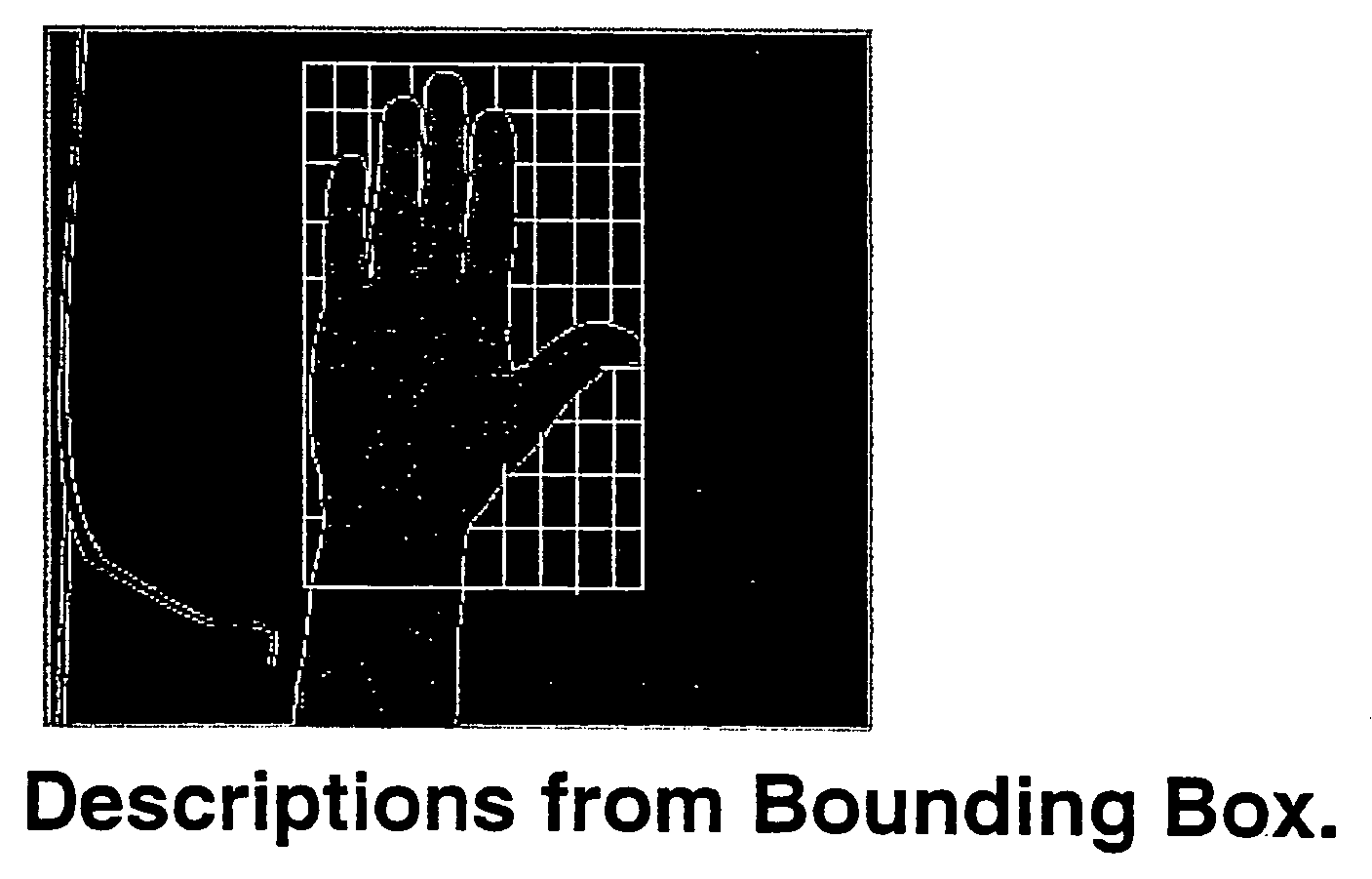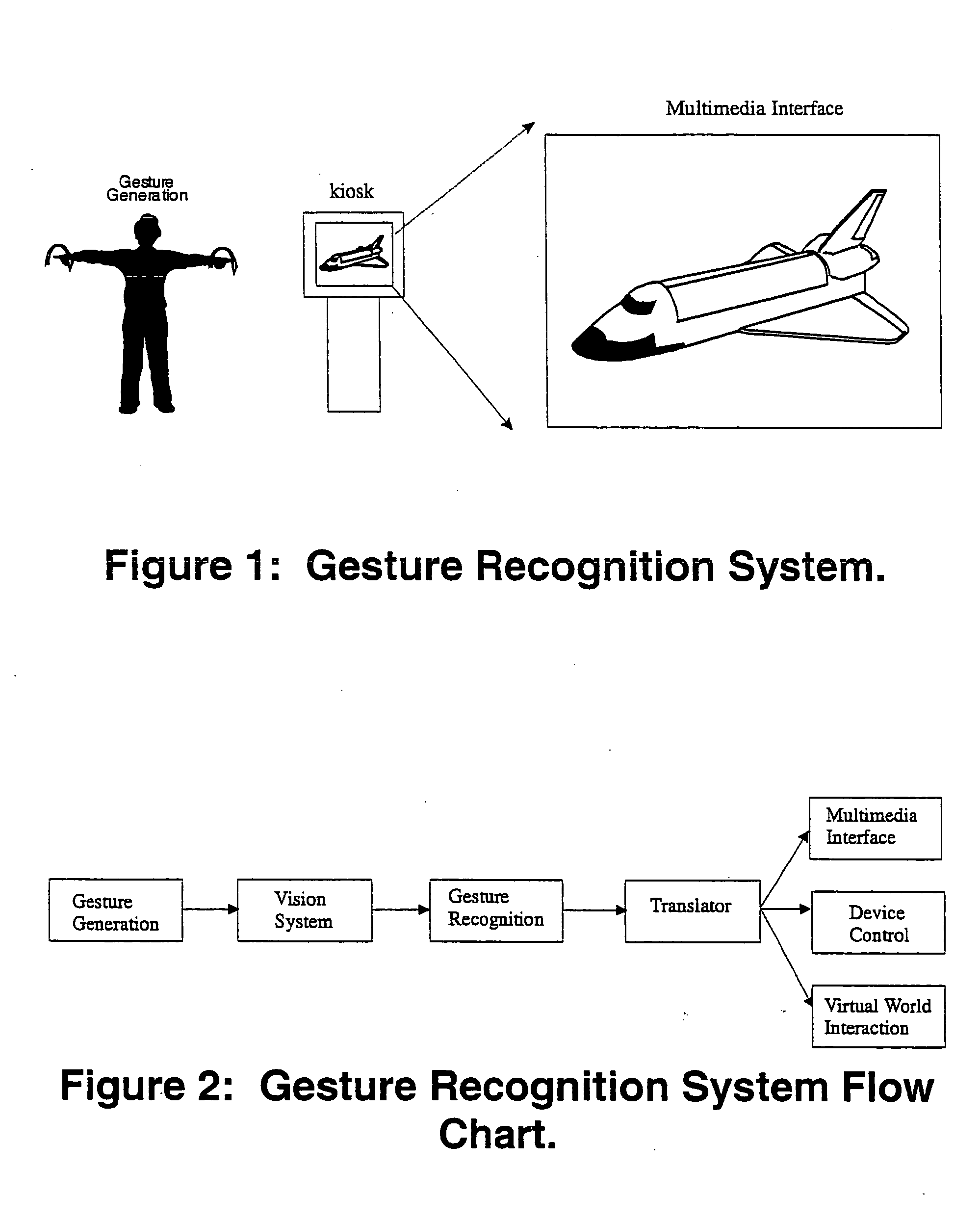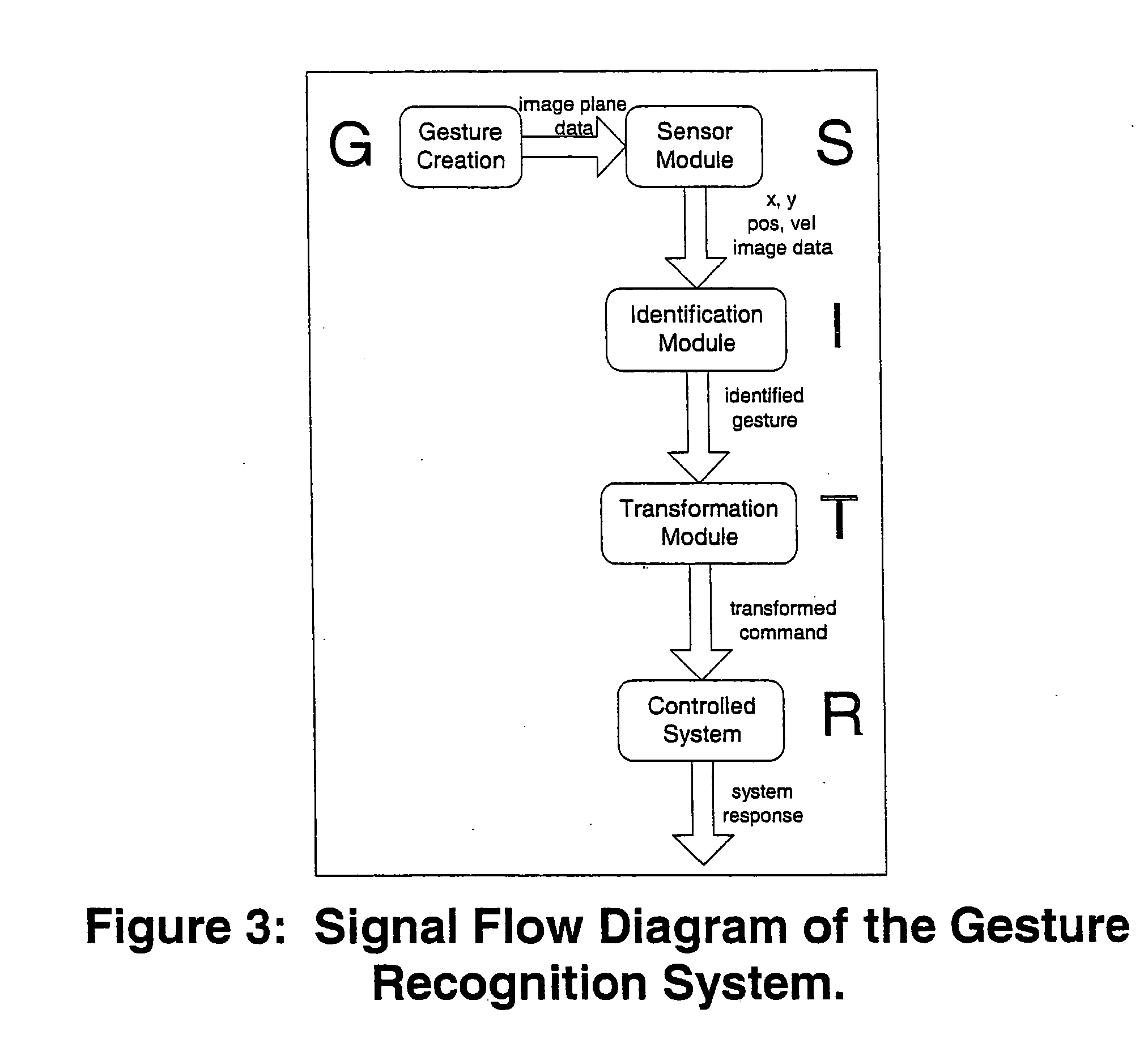Gesture-controlled interfaces for self-service machines and other applications
a technology of self-service machines and tactile interfaces, applied in the field of person-machine interfaces, can solve the problems of system performance degradation, abuse and damage of any tactile interface, and achieve the effect of wide utility and small residual error
- Summary
- Abstract
- Description
- Claims
- Application Information
AI Technical Summary
Benefits of technology
Problems solved by technology
Method used
Image
Examples
Embodiment Construction
[0050]FIG. 1 presents a system overview of a gesture controlled self-service machine system according to the invention. FIG. 2 shows a flow chart representation of how a vision system is views the gesture created, with the image data sent to the gesture recognition module, translated into a response, and then used to control a SSM, including the display of data, a virtual environment, and devices. The gesture recognition system takes the feature positions of the moving body parts (two- or three-dimensional space coordinates, plus a time stamp) as the input as quickly as vision system can output the data and outputs what gesture (if any) was recognized, again at the same rate as the vision system outputs data.
[0051] The specific components of the gesture recognition system are detailed in FIG. 3, and these include five modules: [0052] G: Gesture Generation [0053] S: Sensing (vision) [0054] I: Identification Module [0055] T: Transformation [0056] R: Response
[0057] At a high level, t...
PUM
 Login to View More
Login to View More Abstract
Description
Claims
Application Information
 Login to View More
Login to View More - R&D
- Intellectual Property
- Life Sciences
- Materials
- Tech Scout
- Unparalleled Data Quality
- Higher Quality Content
- 60% Fewer Hallucinations
Browse by: Latest US Patents, China's latest patents, Technical Efficacy Thesaurus, Application Domain, Technology Topic, Popular Technical Reports.
© 2025 PatSnap. All rights reserved.Legal|Privacy policy|Modern Slavery Act Transparency Statement|Sitemap|About US| Contact US: help@patsnap.com



